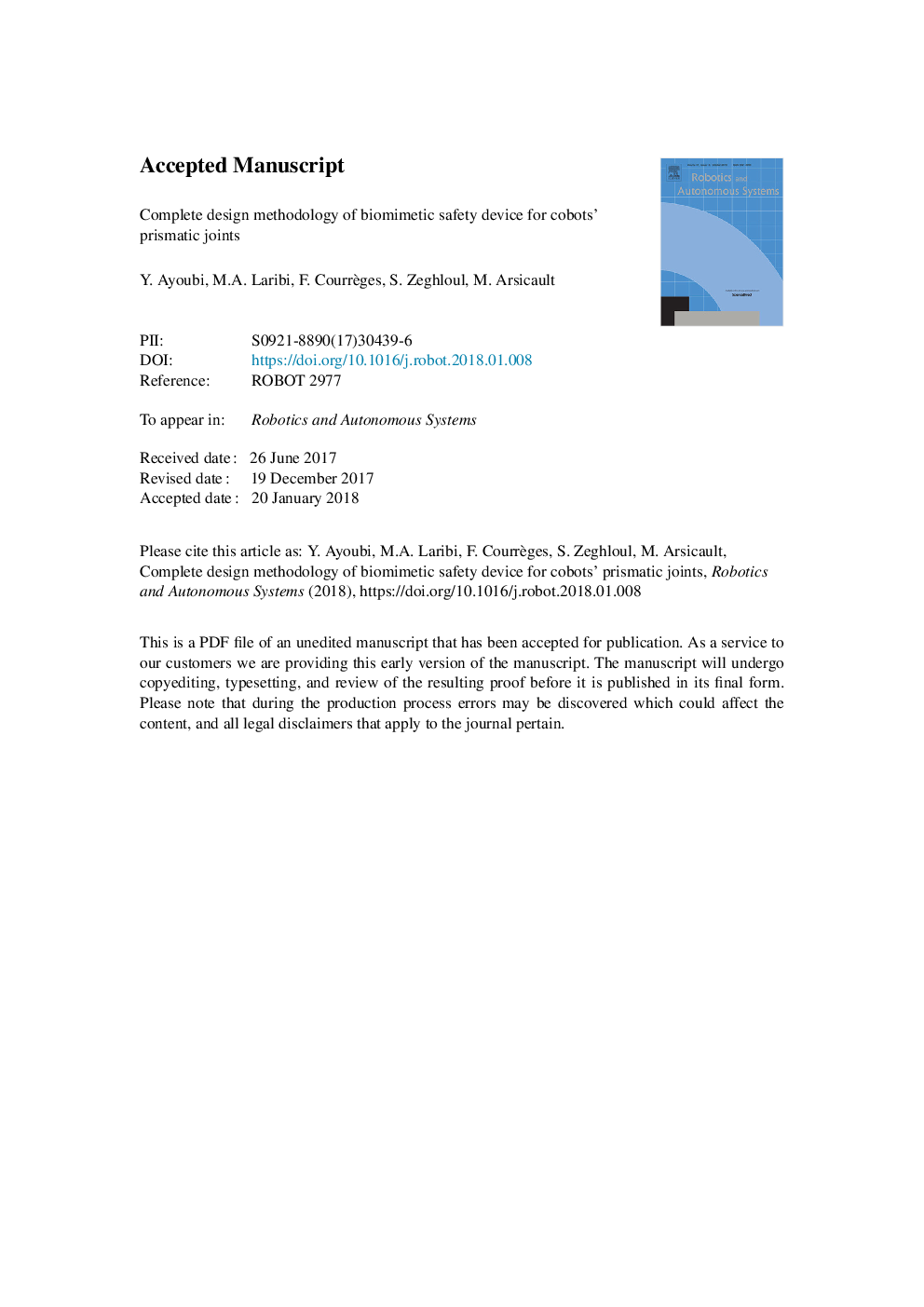| Article ID | Journal | Published Year | Pages | File Type |
|---|---|---|---|---|
| 6867246 | Robotics and Autonomous Systems | 2018 | 22 Pages |
Abstract
Making robots collaborate safely with humans has created a new design paradigm involving the biomimetic mechanical behavior of robots' joints. However, few authors have contributed to the problems of safety in pure linear motion, i.e. a prismatic joint, in contrast to rotary motion. The contribution of this work is to present a new design that is capable of achieving, passively, an implementation of nonlinear elastic behavior for prismatic joints-the so-called Prismatic Compliant Joint (PCJ). This new device is based on the association of a six-bar mechanism with a linear spring. Hence, this structure generates a nonlinear stiffness behavior under a specified external force. The elastic characteristics of the PCJ are derived from a generic biological muscle mechanical behavior model and then customized according to the force-safety criteria of physical Human/Robot Interaction (pHRI) into a Hunt-Crossley contact model. A further investigation is carried out, via simulation, to verify the shock absorption capacity of the PCJ with a dummy head obstacle. In order to fit the PCJ response curve to the established safety measures, an optimization based on a genetic algorithm method is employed to tune the PCJ's intrinsic parameters subject to some chosen constraints.
Keywords
Related Topics
Physical Sciences and Engineering
Computer Science
Artificial Intelligence
Authors
Y. Ayoubi, M.A. Laribi, F. Courrèges, S. Zeghloul, M. Arsicault,
